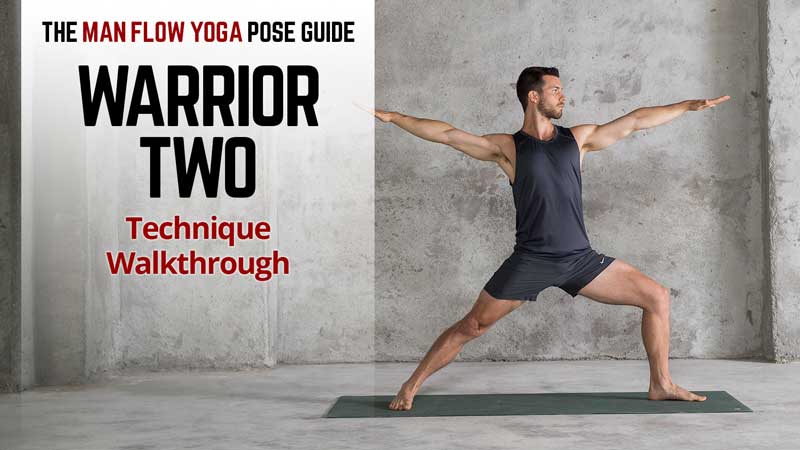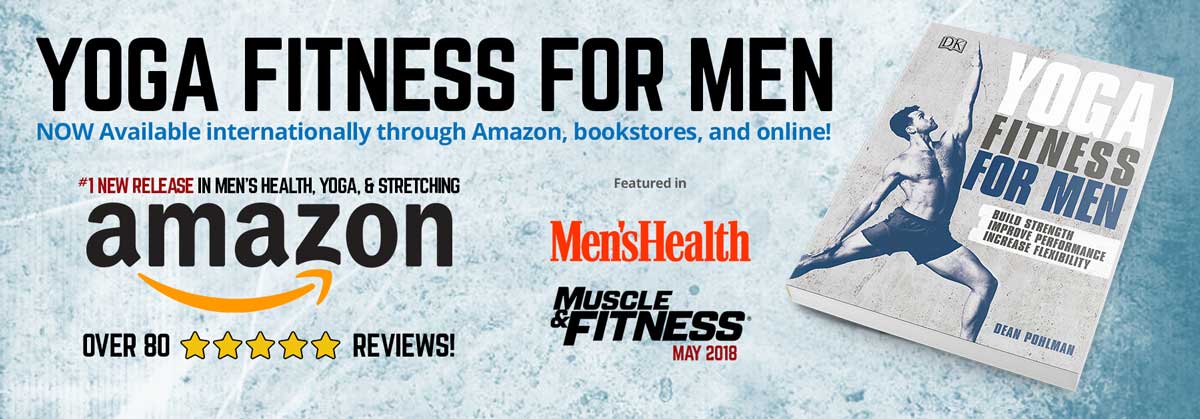This is an essential lunge posture that builds strength and mobility in the hips, ankles, and core. It’s useful for office workers to combat the negative effects of sitting, as well as for athletes to improve hip mobility for more agile change of direction and injury prevention.
Target Area: Hips, Core, Ankles
Difficulty: Beginner
Benefits:
- Improves groin mobility for lower-back relief
- Strengthens hips, knees, and core
- Improves lower- body strength and endurance
Considerations – who should be careful?
- Anybody with a lower-body injury.
- People who have issues with hip flexion combined with external rotation.
Technique Walkthrough
- Stand in a wide-legged stance with your feet 4 to 5ft (1.25–1.5m) apart.
- Turn left foot to face straight outward, and bend the knee until it is directly over your
ankle. - Place hands on hips to ensure hips are level. Squeeze legs toward each other to engage inner thighs
- Keeping your torso over your hips, extend your arms to the sides, palms facing down, and press the fingertips of your opposite hands away from one another.
- Turn your head to gaze down your left arm. Lift ribs away from hips, and maintain tension in legs.
- Hold the posture, inhaling as you lengthen the spine and grow taller, and exhaling as you sink the hips deeper and engage core.
- Repeat on the other side.
Pro Tip: To level hips, press the back hip into the front hip and squeeze legs toward each other. Sink deeper into front knee as long as it doesn’t cave inward, lower back remains flat, and shoulders stay over hips.
What you should (and shouldn’t) be feeling.
What should you be feeling?
- Stretch in chest and biceps
- Stretch through groin
- Engagement of core, thighs, and glutes
What you shouldn’t feel.
- Pinching in lower back; if you do, squeeze glutes and tighten abs to reach tailbone down
- All your weight in front leg; if it is, shift hips directly under torso and center weight
Common Errors & How to Avoid.
- Shoulders leaning forward past hips; make sure to keep your shoulders directly above your hips.
- Lower-back in an arched position; make sure tailbone is reaching down, core is firmly engaged, and legs are squeezing toward one another.
- Hips not centered between feet; don’t allow your hips to press backwards, lightly press your hips forward (in the direction they are facing) and keep them squared.
- Front knee caving in toward the inside; squeeze your knee toward the outside and firmly engage your external hip rotators (glute).
- Arching through your back to compensate for lack of mobility; bring your legs closer together, focus on proper technique in your hips. Technique > Depth
- Back hip is higher than the front hip. To fix this, press your back hip into your front hip. Place both hands on your hips to ensure they are now level.
- Hips not facing mostly to the outside; make sure your hips aren’t facing forward, but at the same time, make sure you aren’t excessively straining to keep your hips facing directly to the outside – this is unnatural.
- Shifting weight into the front of the front foot, rather than pushing down through the heel. Make sure you are pushing down evenly into the entire foot – toes, arch, and heel.
FAQs
- What if I am not feeling the stretch in my groin?
It means you aren’t aligning your hips and spine properly, or your feet need to be further apart – most likely, it is the former. Make sure your spine is neutral, your butt isn’t sticking out behind you, and your hips are level. - What if I feel the weight in my knee, and not in my hips?
This usually means your knee is too far forward, or you’re not focusing on the proper engagement in your hip muscles. Squeeze your legs toward one another, squeeze your front knee to the outside (not the inside) and engage the glute, and push down firmly through the heel in your front foot.
Want to see more info like this? These photos and sections are taken from Yoga Fitness for Men, published in May 2018 by DK Publishers, and written by Dean Pohlman (that’s me), the founder of Man Flow Yoga.


